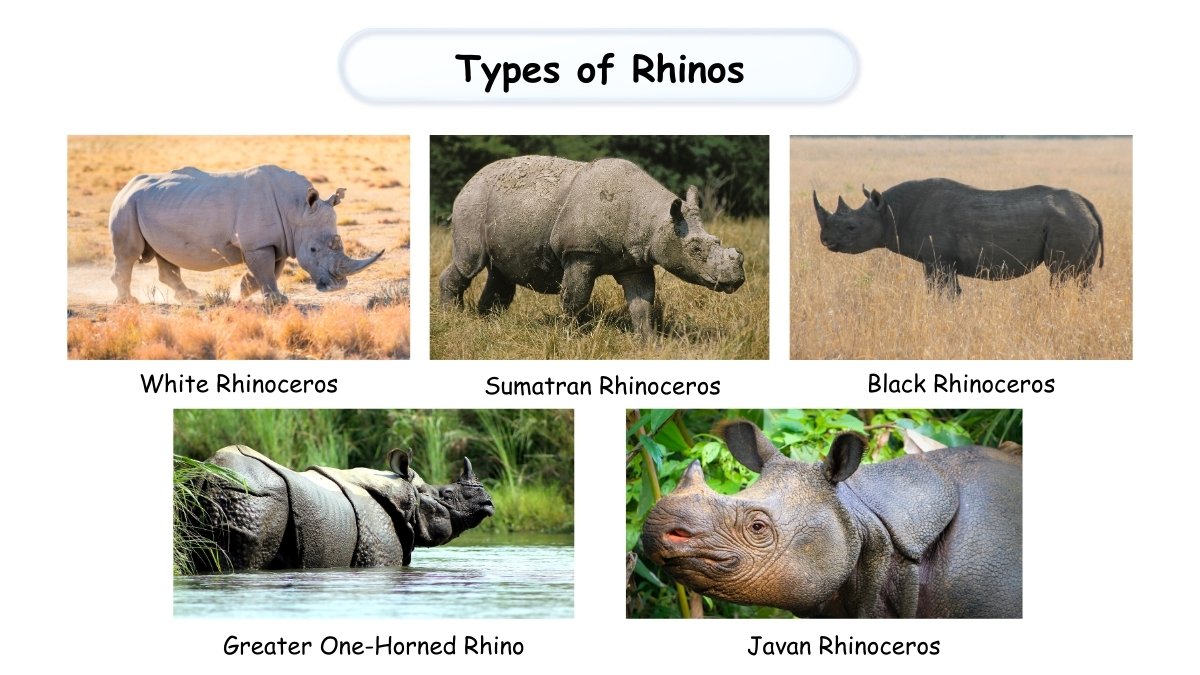Scientific name of rhinoceros: The rhinoceros, often simply referred to as "rhino," is one of the largest land mammals on our planet. This amazing land animal has been on Earth for millions of years. But today, all types of rhinos are in danger, mostly because of poaching and habitat loss. For example, a recent report from the International Union for Conservation of Nature (IUCN) and TRAFFIC says that the Javan rhino population has dropped to about 50 individuals because of poaching. The first step in caring for and protecting rhinos' habitat is to learn their scientific name and the various types of rhinos.
What is the Scientific Name of the Rhinoceros?
The scientific name for the rhinoceros comes from the family Rhinocerotidae. This classification puts all modern rhinos in the same group. This system, used for the classification of rhino species, is known as binomial nomenclature. It gives each species a two-part name that is used all over the world. The first part is the genus, and the second part is the species. This naming system makes sure that scientists all over the world can talk about the same animal without getting confused by regional or common names. This standardized method is very important for research and conservation efforts around the world.
Different Types of Rhinos
There are now five different types of rhinos that official conservation groups know about. Here are the most recent population numbers for each of the five rhino species and their conservation.

| Common Name | Scientific Name for Rhino Family | Estimated Population (as of 2025) | Conservation Status |
| White Rhinoceros | Ceratotherium simum | ~15,752 | Near Threatened |
| Black Rhinoceros | Diceros bicornis | ~6,788 | Critically Endangered |
| Greater One-Horned Rhino | Rhinoceros unicornis | ~4,075 | Vulnerable |
| Javan Rhinoceros | Rhinoceros sondaicus | ~50 | Critically Endangered |
| Sumatran Rhinoceros | Dicerorhinus sumatrensis | ~37-47 | Critically Endangered |
Do You Know - What is the Scientific Name of Human Beings?
The Purpose and Origin of Scientific Naming
In the 18th century, Swedish botanist and zoologist Carl Linnaeus came up with the scientific naming system, which is also known as binomial nomenclature. The purpose of this system is to give each living thing a name that is unique and known by all. The name of the genus is always capitalized, and the name of the species is always lowercase. It is common for both names to be italicized. For example, the scientific name for the white rhino is Ceratotherium simum. This standardized system makes it easier for scientists, researchers, and conservationists to talk about certain organisms without getting mixed up by using different common names in different languages and areas.
Interesting Facts about Rhinoceroses
Here are some more unknown but interesting facts about rhinos you may not know yet:
-
Every year on September 22, people all over the world celebrate World Rhino Day. WWF-South Africa first announced it in 2010. Since then, it has grown into a worldwide event to raise awareness for the protection of all five rhino species.
-
Rhino horns are not made of bone; they are made of compressed keratin fibers, which are similar to hair and nails.
-
The name "white rhinoceros" is thought to be a mistake for the Afrikaans word "wyd," which means "wide" and refers to the animal's wide, square lip.
-
Rhinos can run surprisingly fast, with some species reaching speeds of up to 40 miles per hour (64 km/h).
-
Rhinos can't see well, but they have a great sense of smell and hearing, which they use to find their way and spot danger.
Also Read - What is the Scientific Name of a Lion?
In conclusion, Rhinocerotidae is the scientific name for the family of rhinoceroses, with each of the five species having its own unique binomial name. This specific classification system, created by Carl Linnaeus, is very important for people all over the world to talk to each other and work together. If we know these classifications and how conservation is going right now, we can work together better to protect the environment around the world. These efforts must continue for the rhino to have a future.
Comments
All Comments (0)
Join the conversation